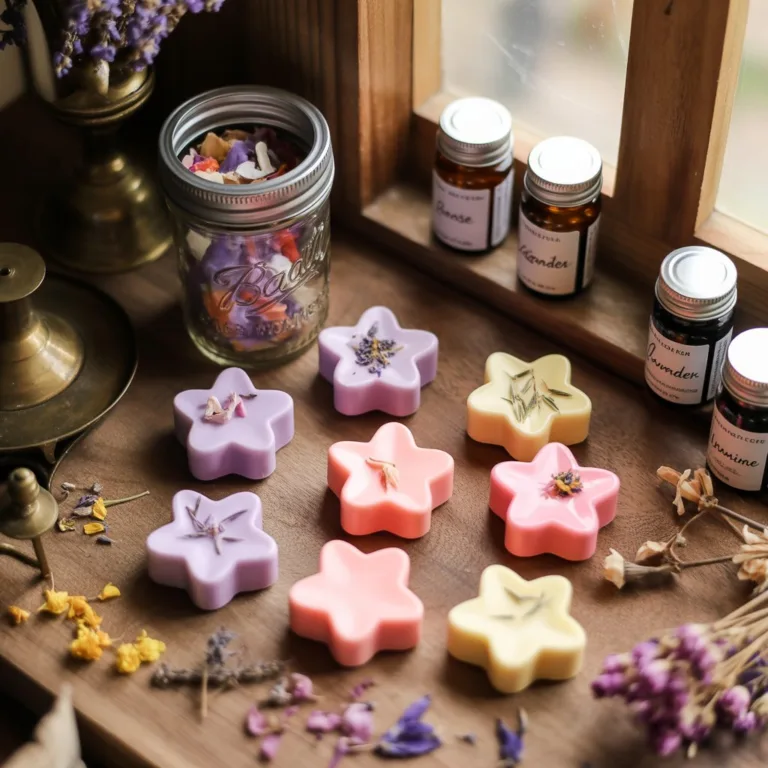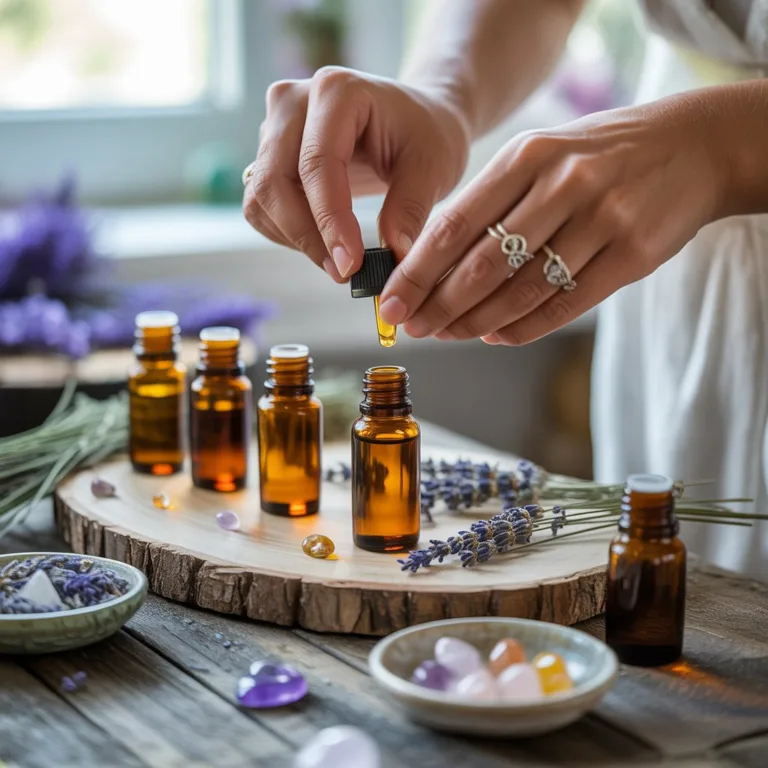Homemade hand soaps have become a cherished craft for people seeking cleaner, more sustainable living. By combining natural ingredients like aloe vera and honey, it’s possible to create soaps that nourish the skin, smell amazing, and protect the environment at the same time. This practice blends creativity, sustainability, and self-care — transforming a simple daily product into a mindful ritual.

Unlike commercial soaps, which often contain synthetic fragrances, sulfates, and preservatives, homemade hand soaps allow full control over what touches your skin. Aloe vera and honey are standout ingredients for their moisturizing, healing, and antibacterial properties, making them perfect for gentle, effective cleaning without harsh chemicals.
As more people turn to eco-friendly lifestyles, learning how to craft soaps from natural sources represents both a personal and environmental act of care — one that supports sustainability, reduces packaging waste, and encourages mindful consumption.
Why Choose Aloe Vera and Honey
Both aloe vera and honey have been celebrated for centuries in skincare. Their natural chemistry offers deep hydration, protection, and rejuvenation — all essential for maintaining healthy skin.
- Aloe Vera: Known for its soothing qualities, aloe helps calm irritation, heal minor cuts, and moisturize dry skin. It’s packed with vitamins A, C, and E, as well as antioxidants that protect against damage.
- Honey: A natural humectant, honey locks in moisture and has antimicrobial properties. It gently cleanses while maintaining the skin’s natural oils.
Together, they form a powerful combination that balances cleansing with nourishment. When used in homemade soap, this duo leaves the skin refreshed, hydrated, and soft — without the dryness that commercial soaps often cause.
Sustainability and Soap Crafting
Creating your own soap is more than just a DIY project — it’s a statement about sustainable living. Each bar made at home replaces multiple plastic bottles of liquid soap, helping reduce landfill waste and production emissions.
By sourcing locally produced honey and organic aloe vera, you also support small farmers and avoid industrial agriculture’s environmental footprint. Even the process of making soap can be eco-conscious: using energy-efficient methods, reusing molds, and packaging finished bars in recycled or compostable materials.
Homemade soap making encourages resourcefulness, creativity, and awareness — values central to sustainable living.
Essential Ingredients and Tools
To make high-quality, safe, and effective homemade soap, a few basic tools and ingredients are needed. These include:
Base Ingredients:
- Olive oil or coconut oil (for moisturizing properties)
- Shea butter or cocoa butter (for a creamy texture)
- Aloe vera gel (fresh or pure bottled extract)
- Raw honey
- Lye (sodium hydroxide) — for traditional cold-process soaps
- Distilled water
Optional Additions:
- Essential oils (like lavender, lemon, or eucalyptus) for fragrance
- Dried herbs or petals (such as chamomile or rose) for visual appeal
- Oatmeal or coffee grounds for natural exfoliation
Tools:
- A stainless-steel pot or heatproof bowl
- Wooden or silicone spatula
- Soap mold or repurposed silicone baking mold
- Protective gloves and goggles (for lye handling)
- Thermometer and digital scale for accuracy
Preparing these materials ensures safety, consistency, and quality in your soap-making process.
Methods for Making Aloe Vera and Honey Soap
There are several methods to make homemade soap — each suited for different skill levels and preferences.
Cold Process:
This traditional method creates soap through chemical saponification — the reaction between fats and lye. It allows customization with natural oils and scents. While it requires curing time, it produces long-lasting, gentle bars.
Hot Process:
Similar to cold process, but involves heat to accelerate saponification. This method is faster and creates a rustic, textured finish that’s ready sooner.
Melt and Pour:
A beginner-friendly approach using pre-made soap bases. You melt the base, mix in aloe vera, honey, and essential oils, and pour it into molds. This avoids handling lye while still allowing creativity and personalization.
Each method can yield luxurious results when combined with quality ingredients and patience.
Balancing Natural Ingredients
When working with aloe vera and honey, proportions are essential. Too much honey can make the soap sticky or soft, while too much aloe may alter the curing process. A balanced formula ensures the bar hardens properly while maintaining moisturizing benefits.
An effective ratio for cold-process soap might look like this:
- 250g olive oil
- 150g coconut oil
- 100g shea butter
- 50g pure aloe vera gel
- 2 tablespoons raw honey
- Lye and water according to your soap calculator
This mix provides excellent cleansing without stripping the skin, resulting in a smooth, creamy lather that feels luxurious and hydrating.
The Science of Saponification
Behind every successful bar of soap is a bit of chemistry. Saponification occurs when fats or oils react with lye, transforming them into soap and glycerin. Glycerin, a natural byproduct of this process, is what keeps homemade soaps moisturizing — a benefit often removed from commercial varieties.
Adding honey and aloe vera at the right stage preserves their beneficial enzymes and nutrients. They interact delicately with the saponified base, ensuring the finished product remains both effective and gentle.
Understanding this science gives soap makers more control over texture, longevity, and skin benefits, turning crafting into a fascinating educational activity.
Eco-Friendly Packaging Ideas
Once your soap has cured, packaging becomes an opportunity to reinforce your sustainable values. Consider:
- Wrapping bars in recycled paper or seed paper that can be planted after use.
- Using reusable tins or cloth wraps for gift sets.
- Printing minimalistic labels with soy-based ink.
Small details like these not only elevate presentation but also reduce waste — helping spread the message of environmental responsibility through every product you share.
Creative Variations and Customization
Homemade soap making encourages endless creativity. Once you’ve mastered the aloe vera and honey base, experiment with natural additives:
- Lavender & Aloe Bliss: Calming scent, great for relaxation.
- Citrus & Honey Glow: Uplifting blend that brightens dull skin.
- Charcoal Detox Bar: Adds deep cleansing properties while maintaining softness.
These variations allow soap makers to tailor products to different skin types, needs, and moods — turning sustainability into an ongoing art form.
Teaching Sustainability Through Soap
Soap making is also a powerful educational tool. Schools, community centers, and family workshops often use natural soap projects to teach chemistry, ecology, and mindful consumption.
Children and adults alike can learn how small lifestyle changes — such as making or choosing eco-friendly soaps — reduce pollution and support ethical trade. By transforming a common product into a learning experience, we create awareness that extends beyond the sink and into daily life.
Long-Term Benefits for Skin and Planet
Using homemade aloe vera and honey soap provides dual rewards: personal wellness and environmental preservation. The natural formula hydrates deeply, balances the skin’s pH, and avoids harsh detergents that can cause irritation.
From an ecological standpoint, making your own soap eliminates unnecessary packaging, reduces transportation emissions, and supports zero-waste principles. It’s a small yet meaningful action toward a healthier lifestyle and a greener planet.
Closing Thoughts
Homemade hand soaps with aloe vera and honey offer a simple way to reconnect with nature and embrace sustainable living. Each bar embodies creativity, wellness, and environmental responsibility — proof that everyday products can be beautiful, effective, and planet-friendly.
By crafting your own soap, you’re not just creating something functional; you’re cultivating awareness and mindfulness. Every lather becomes a reminder that sustainability begins with small, intentional choices — and even the humblest bar of soap can make a lasting difference.

Lucas Hartman is a DIY enthusiast and sustainability advocate focused on natural crafts and eco-friendly home décor. With a background in arts and design, Lucas creates tutorials that help families and hobbyists transform everyday recycled or organic materials into beautiful, functional projects.



